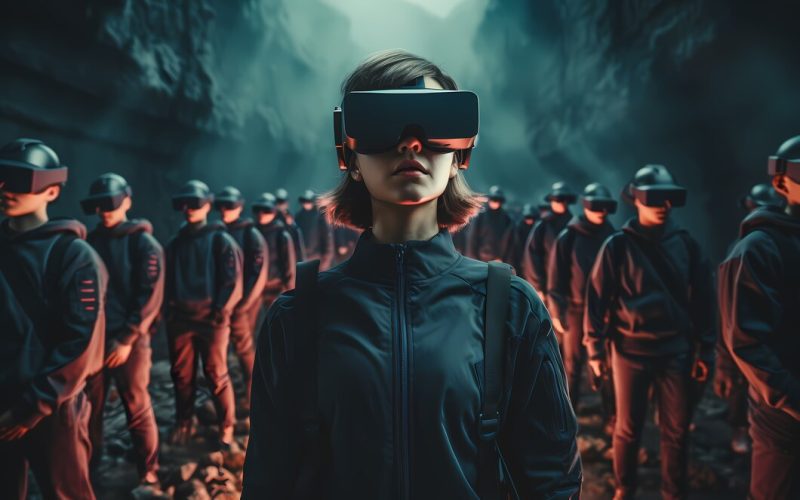Introduction
Augmented Reality (AR) is a powerful new tool for storytelling, blending digital images with the real world to make stories more interactive and exciting. This mix of digital and physical experiences is helping people feel more involved in stories. AR is changing the way we tell stories in fields like entertainment, education, marketing, and tourism. This article looks at how AR is transforming storytelling, exploring its benefits, uses, and future possibilities in an easy-to-understand way.
How Augmented Reality Enhances Storytelling

With AR, creators can add digital images, sounds, or animations to real-world settings. This lets storytellers bring stories to life like never before. Instead of just watching, people can interact with stories, which helps them feel more connected. For example, a history museum might use AR to show historical figures in action, letting visitors watch scenes from the past as they explore. These kinds of experiences make stories more engaging and easier to remember.
How AR Makes Stories Come to Life

Why AR is So Engaging
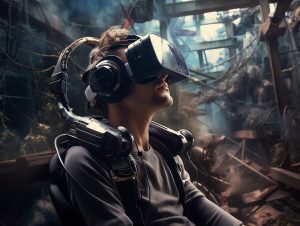
People enjoy AR storytelling because it puts them in the middle of the action. Instead of just watching or reading, they can interact with the story around them. This makes the experience more meaningful and helps them feel connected to it. For example, AR in museums lets visitors “meet” historical figures and see events as if they were happening right now. Being part of the story helps people remember it for longer.
Bringing History to Life with AR
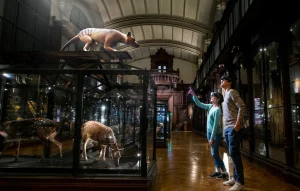
In tourism, AR helps visitors feel like they’re stepping back in time. Many historical sites now use AR to show what life was like in the past. Visitors can walk around old ruins and see how they looked hundreds or even thousands of years ago. This makes travel more exciting and helps people connect with history in a personal way. AR brings history to life, making it feel real and present, not just something from long ago.
Key Benefits of Augmented Reality Storytelling

- Immersive Experiences: AR makes people feel like they are part of the story, mixing digital elements with the real world around them. This creates a powerful, exciting experience that captures their imagination.
- Increased Engagement: AR gets people involved by encouraging them to explore and interact with their surroundings. This higher level of activity helps people feel more connected to the story.
- Enhanced Learning: In schools, AR helps students understand complex ideas by letting them see and explore 3D models and scenes. This hands-on way of learning is easier to understand and remember than traditional methods.
- Broader Audience Reach: With mobile apps and web-based AR, people can enjoy stories from anywhere. This easy access helps marketers and teachers reach more people in different places.
Applications of Augmented Reality in Various Sectors

- Entertainment and Gaming:AR in games lets players enter virtual worlds that blend with their surroundings. Games like Pokémon GO allow players to see and catch virtual creatures in the real world. In movies and theater, AR can add to stories, letting viewers interact with characters and scenes in real life.
- Education and Training: AR makes learning more interactive. In healthcare training, for example, AR can show medical procedures, allowing students to practice safely without any risks.
- Tourism and Heritage Sites: Many historic places use AR to bring history to life. Visitors can explore and see virtual scenes of past events or famous people as they walk around.
- Retail and Marketing: Brands use AR to make ads more interactive, allowing customers to see products in their own space. This personal touch makes shopping more fun and helps people feel confident about their purchases.
How AR Supports Learning and Skill-Building
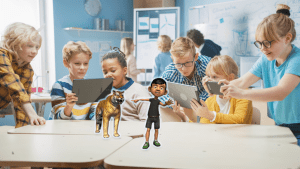
AR isn’t just for fun; it also helps people learn new skills in real life. In healthcare, for example, AR can train medical students by showing virtual anatomy that they can study closely. Mechanics can use AR to see 3D models of machines to learn how each part works. This hands-on experience helps people learn faster without needing real tools or models. It’s a powerful tool for learning in many fields.
Making Events More Interactive with AR

AR is making events like sports games, concerts, and exhibitions more fun and interactive. In sports, AR can show live stats on the field, helping fans follow the game better. At concerts, AR can add effects on viewers’ phones, like virtual fireworks or holograms of performers. These extra features make the experience more exciting and bring fans closer to the action, even if they’re watching from home.
AR Brings Family Stories to Life

AR is becoming part of family life, allowing people to share personal stories in fun ways. Families can create AR photo albums that show memories or videos when you look at the photos. Kids can use AR to make their own stories, bringing characters and scenes to life in their rooms. This makes family time more creative and interactive, giving everyone new ways to capture and share their favorite moments.
Challenges and Limitations of AR in Storytelling

While AR has a lot of potential, it also faces some challenges:
- High Development Costs: Making AR experiences needs advanced technology and special skills, which can be expensive.
- Technical Limitations: AR often needs fast internet and powerful devices, which makes it hard for some people to access.
- Privacy Concerns:AR apps collect user data, raising privacy issues. It’s important to manage data carefully and keep it secure to protect users.
Future Potential of Augmented Reality in Storytelling
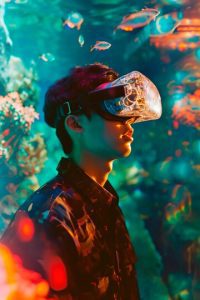
Analysis Table: Key Features of Augmented Reality Storytelling
| Feature | Description |
|---|---|
| Immersive Experiences | Offers a realistic, engaging way for audiences to experience stories. |
| Interactive Elements | Allows audiences to interact with and manipulate digital content in the real world. |
| Emotional Engagement | Strengthens emotional connections by making stories more memorable and impactful. |
| Accessibility | Provides content through mobile apps or web-based platforms, reaching a wider audience. |
Comparative Table: Traditional vs. Augmented Reality Storytelling
| Aspect | Traditional Storytelling | Augmented Reality Storytelling |
|---|---|---|
| Engagement Level | Passive engagement | Active, interactive engagement |
| Immersion | Limited | High integrates digital elements into the real world |
| Accessibility | Often location-dependent | Global accessibility via mobile devices |
| Learning Efficiency | Less effective in complex concept visualization | Effective, especially in fields like education |
| Production Cost | Lower | Higher due to technology and development costs |
Conclusion
Augmented reality is reshaping storytelling by making it more interactive, immersive, and accessible. Through AR, stories are no longer confined to a screen or page; they can be experienced in the real world, enhancing engagement and understanding. While challenges such as development costs and privacy issues exist, the future of AR storytelling holds immense potential. With advancements in AR technology, storytellers will continue to find innovative ways to bring stories to life, captivating audiences across various sectors.






